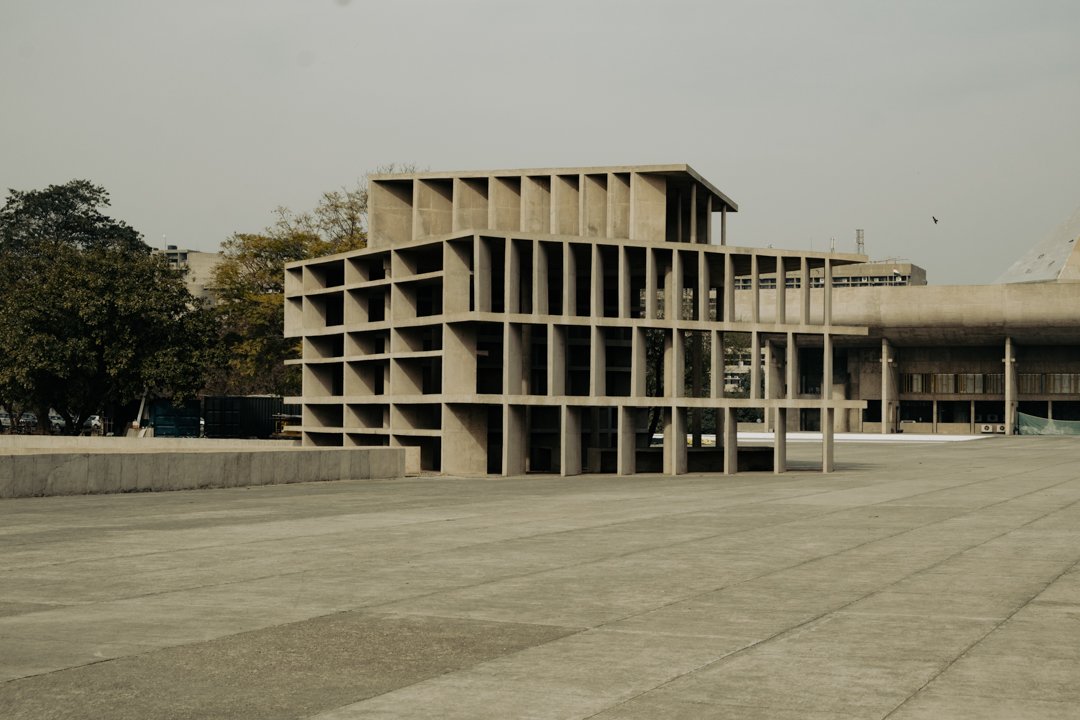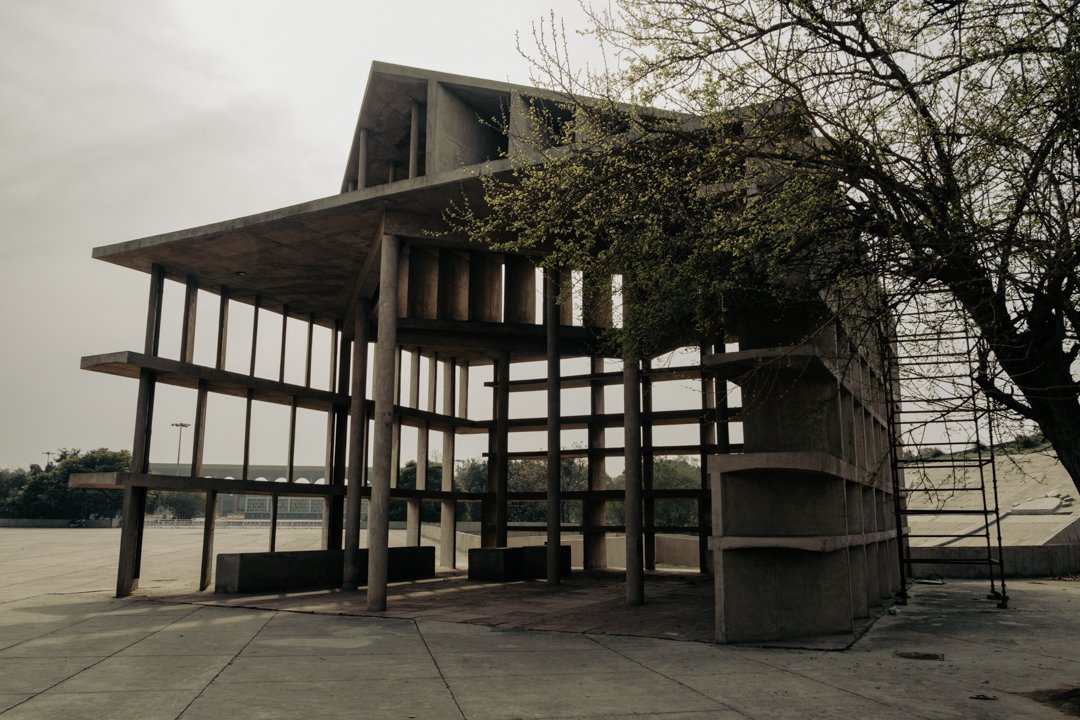In the north of India, on the foothills of the Himalayan mountains is a modernist’s raw concrete city from another time. Which is exactly the reason we found ourselves here in Chandigarh. Our final destination.
Following Indian Partition in 1947, Prime Minister Jawaharlal Nehru wished for a new state capital for Punjab since Lahore went to Pakistan. So the Swiss born modernist architect Le Corbusier spent the 1950s bringing concrete to Chandigarh to create "the City Beautiful”. A utopian city for both Punjab and Haryana.
A city designed from scratch to resemble a living organism, complete with head, heart, limbs and circulatory system.
Chandigarh's regimented grid layout, comprising numbered rectangular "superblocks" measuring 800m wide by 1,200m long, contrasts sharply with the chaotic feel of India's traditional cities. Roads, bike lanes, green spaces, houses, public utilities all laid out in a systematic ordered way.
You can use the drain covers to help you navigate the city.
Le Corbusier’s cousin Pierre Jeanneret and the English architects Maxwell Fry and Jane Drew were brought in to design numerous buildings under Le Corbusier's direction. He himself took charge of the Capitol Complex, the state administrative hub located in the northernmost "Sector 1", which represents the city's conceptual "head".
We were staying in Sector 17, So off we set on our Brutalist adventure and discovered the grid system in reality comprised of some very, very long roads.
The shaded tree-lined, wide roads are lined with crumbling brutalist government and police buildings. The pavements, we’ve not seen many of those in India, have various obstacles you have to navigate around and are crumbling away.
The side roads were filled with plush, suburban, modernist, Californian style highly-secured Advocate homes and offices.
To get near, let alone inside Le Corbusier’s Capital Complex, we had to navigate a series of administrative hurdles. Initially, thanks to google maps we found our way to the High Court back-door premises which was really interesting with lawyers and barristers buzzing around and court papers being transported here and there. We were swiftly escorted off the premises by the police and sent to the tourism office to arrange an official escort. Didn’t you see the signs?????
Having previously experienced India's famous bureaucratic nightmares we thought we were on a hide to nothing.
However, after presenting photos of our passports we were assigned security guards, army guards and tourism officials to escort us to the showpiece - Capital Complex - the head, the brain of Le Corbusier’s creation. This is where the government headquarters and administrative offices are. This UNESCO World Heritage Site, is made up of The Secretariat Building, The High Court of Justice and The Palace of Assembly.
High Court Justice building. The additional top roof is designed to absorb heat to keep the law chambers cool.
The visit was a whirlwind and due to court being in session we were unable to go inside or even near the signs forbidding you to go within a stones throw. Barristers meanwhile pace the grounds in-between sessions
The Open Hand Sculpture stands 26 meters high. The lower assembly area has no echo and a person speaking can be heard without the need of a microphone. The hand moves indicating the wind direction. The city's motto is "Open to give, open to receive", symbolised by Le Corbusier's Open Hand monument.
We managed to arrange a second visit a couple of days later, this involved another round of paperwork, another set of security measures and finally we were allowed a little closer to the Capital Complex buildings and even inside the Palace of Assembly and inside the Punjab Assembly room. Not without handing over bags, phones and cameras and being scanned. The inside is a glorious celebration of modernist interior design and furniture. The escorted lightening tour unfortunately didn’t include getting any closer to The Secretariat.
This sculpture is an experiment with how to get light in a building but not the heat. It’s certainly is a lot colder when you walk round the other side.
Left is the Haryana Palace of Assembly Room roof. Right is the Punjab’s roof. It was designed to let light flood in and highlight the speakers inside the room below. It has now been blocked up due to unwanted drone activity.
Palace of Assembly
Secretariat Building.
What we have witnessed is a utopian city showing more than just a few cracks. Some areas have a distinct distopian look. Many of Le Corbusier’s most emblematic concrete buildings have fared badly in the Indian summer heat and monsoon seasons. Restoration campaigns have attempted to restore some of the buildings in the city but Le Corbusier’s vision and “raw concrete” aesthetic is being gradually eroded in the process.
This is a a quiet city thanks to the no horn policy but its deafening in its overbearing signage. There is also a huge police presence. To us, as non-indian visitors it doesn’t feel like the happiest Indian city it claims to be, but we don’t live here.
It’s always worth popping into the Indian Coffee Shop - if you can get a table.
Chandigarh has apparently become India’s wealthiest city per capita. However on the other side of the coin the city now faces the challenge of overpopulation. Initially designed to accommodate 500,000 inhabitants, it’s expected to be home to 1.6 million inhabitants by 2031. Slums, as we witnessed in an unofficial taxi ride back to the airport, continues to expand outside the city, the very opposite to Le Corbusier’s dream.



